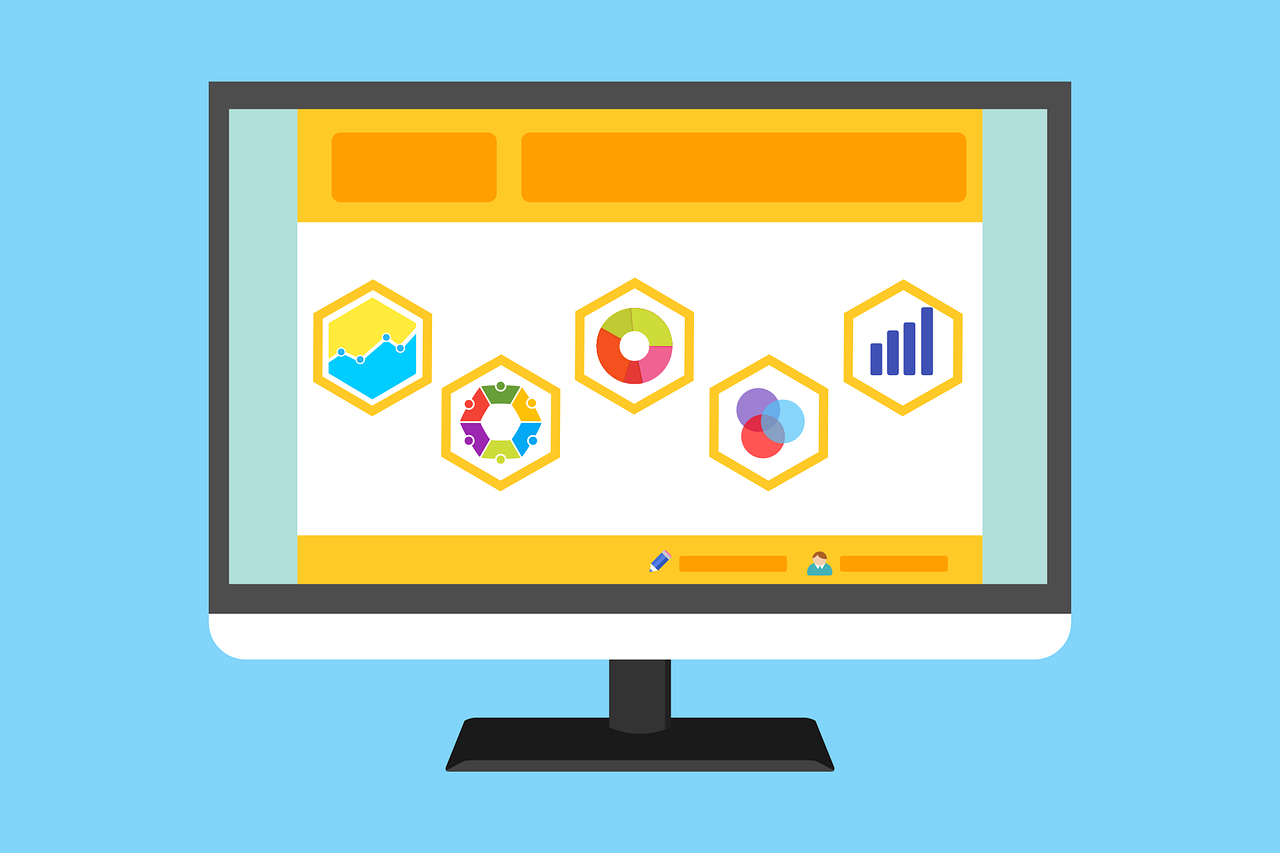Small business owners today are surrounded by more information than ever before. Sales reports, marketing analytics, customer records, and financial data come from every system you use. Instead of helping you act quickly, this flood of information often creates confusion and stalls decisions. It’s called data overload, and it’s a growing problem for many SMBs.
The answer is not to collect less data, but to make it easier to understand. That’s where data visualization comes in. By turning spreadsheets and reports into clear visual stories, you can see patterns at a glance, reduce wasted time, and make faster, smarter decisions. For small and midsize businesses, mastering this skill isn’t just useful—it’s essential for staying competitive.
Why Data Overload Hurts Small Businesses
Every tool you use generates numbers: CRMs track leads, POS systems monitor transactions, social platforms show engagement metrics, and accounting software logs expenses. While each of these insights is valuable, together they can overwhelm. Common issues include:
- Decision paralysis: Leaders delay action because they can’t find clear answers quickly enough.
- Missed opportunities: Seasonal sales shifts or rising costs remain hidden until it’s too late.
- Duplicated effort: Employees create their own reports in silos, wasting time and causing inconsistency.
Larger enterprises often have analysts to handle this flood. SMBs rarely do. That’s why data visualization for small businesses is so important—it democratizes insights and makes data accessible to everyone.
The Case for Simple Data Visualization
Our brains process visuals far faster than raw numbers. A simple line chart showing revenue growth tells a story in seconds that would take pages of spreadsheets to explain. For SMBs, data visualization provides benefits that drive efficiency and growth:
- Clarity: Trends and anomalies stand out instantly.
- Speed: Managers and staff can act without wading through irrelevant data.
- Shared understanding: Visuals bridge gaps between technical and non-technical team members.
- Retention: People remember what they see more than what they read.
This clarity reduces friction, speeds up decisions, and creates confidence across your team.
Why Visualization Matters for Texas SMBs
Here in Southeast Texas, small businesses compete in industries ranging from energy and retail to professional services. Many owners juggle multiple roles, leaving little time for deep analysis. Data visualization helps these businesses identify local market trends, respond to seasonal demand, and track costs in ways that plain spreadsheets cannot.
For example, a local retailer may notice foot traffic spikes during Port Arthur’s festival season. Visual dashboards make these patterns clear, allowing the owner to adjust inventory and staffing with confidence. Without visualization, those insights may remain buried in monthly sales reports until the opportunity is gone.
7 Powerful Best Practices for Clear Visuals
Not all charts improve understanding. Poorly designed visuals can confuse your audience even more. To make sure your data visualization works for you, follow these proven practices:
1. Start With Your Audience
Consider who will use the chart. A CEO scanning a quarterly update needs a summary, while a marketing assistant tracking ad spend benefits from detail.
2. Match the Chart to the Story
Use the right tool: line charts show trends, bar charts compare groups, pie charts highlight proportions (when simple), and heatmaps reveal timing or intensity. Picking the wrong chart confuses rather than clarifies.
3. Keep the Clutter Out
Simplify by removing anything that doesn’t add value—extra lines, heavy backgrounds, or too many colors. Clean charts are easier to interpret quickly.
4. Use Color Strategically
Highlight key insights with one bold color. Avoid rainbows. Strategic use of color directs focus to what matters most.
5. Choose the Right Chart Type
Match chart to data: line for time trends, bar for comparisons, histogram for distribution. Right chart equals right message.
6. Enable Exploration
Interactive dashboards let team members dig into the exact week, product, or customer group they care about. This cuts down on repeated report requests and empowers staff.
7. Automate Updates
Don’t spend hours pulling reports manually. Tools like Excel Power Query or automated imports in Zoho Analytics ensure your visuals are always current.
Affordable Tools to Get Started
You don’t need enterprise software to adopt data visualization. Affordable, accessible tools exist:
- Google Data Studio – Free, integrates with Google Analytics and Sheets.
- Zoho Analytics – Designed for SMBs with easy dashboards.
- Tableau Public – Great for storytelling, though dashboards are public-facing.
- Excel Power Query/Power Pivot – Automates repetitive prep within Excel.
- Infogram – Ideal for quick reports and marketing visuals.
Step-by-Step Checklist for SMB Adoption
If you’re unsure where to begin, use this checklist to start simple and scale as you go:
- Pick one metric: Choose a critical number—monthly sales, service tickets, or cash flow.
- Select a tool: Start with something accessible like Google Data Studio or Excel.
- Create a clean chart: Apply best practices—clear labels, minimal clutter, purposeful color.
- Automate updates: Schedule data imports to keep reports fresh.
- Review weekly: Share the chart with your team and ask what they see.
- Expand slowly: Add new metrics only after the first visual becomes a routine part of decision-making.
This gradual approach keeps data visualization manageable and ensures adoption sticks.
Real-World Example: Accounting Firm
A Southeast Texas accounting firm once tracked billable hours, invoices, and collections in separate spreadsheets. Staff spent two days each month compiling reports, only to find the data was outdated. By moving to Zoho Analytics, they built a dashboard showing real-time billable hours, overdue invoices, and revenue. Within three months, overdue invoices dropped by 25% and managers made faster decisions about client priorities.
Real-World Example: Local Non-Profit
A local non-profit was overwhelmed by donor data and event registrations. Reports were inconsistent and required hours of manual cleanup. By switching to data visualization through Google Data Studio, staff could instantly see which fundraising campaigns performed best. The result? More effective outreach and a 15% increase in donations year-over-year, achieved with fewer administrative hours.
Common Mistakes SMBs Make With Data Visualization
While data visualization can be transformative, many small businesses stumble when first adopting it. Avoid these common mistakes to maximize results:
- Overcomplicating visuals: Adding too many metrics to one chart makes it unreadable.
- Ignoring context: A graph without labels or timeframes can mislead rather than clarify.
- Relying only on flashy design: Beautiful visuals without clear insights don’t help decision making.
- Failing to update data: Outdated visuals cause more harm than good—always automate updates where possible.
Keeping visuals simple, relevant, and current ensures that your team trusts the data and uses it consistently.
Turning Data Into Action
Collecting information is only step one. The value comes when you transform data into insights that drive results. Data-driven decision making becomes easier when visuals highlight the metrics that matter most. Instead of drowning in reports, your team acts on what’s important.
Imagine starting each Monday with a dashboard that shows only the three KPIs that matter—sales, customer satisfaction, and cash flow. No scrolling, no confusion, just clarity. That’s the value data visualization brings to SMBs.
Final Takeaway
Reports don’t have to overwhelm, and decisions don’t have to be delayed by too much information. With thoughtful data visualization, your small business can turn overload into clarity and numbers into growth. Start with one metric, build confidence, and expand as you go. The payoff comes quickly when your data speaks clearly.
When you visualize your data effectively, you empower your team, speed up decision making, and uncover opportunities that would otherwise stay hidden. Whether you’re in retail, legal, non-profit, or professional services, the principles of data visualization apply. The sooner you start, the sooner your data begins working for you—not against you.
Ready to simplify your reporting? Start with a free IT Health Checkup. Our team will uncover gaps, streamline your processes, and help your business make smarter, faster decisions.





